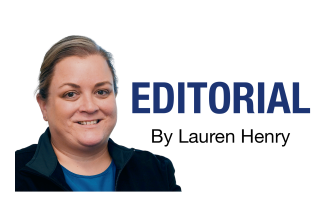“I have been shocked and disappointed by the lack of respect shown to communities and the lack of consideration of their land uses, local government views and landscape,” Ms King said.
From the moment the plan was revealed, the bluntly named lobby group ‘Piss Off Ausnet’, based in the Ballarat and Daylesford region spoke against it.
Its Facebook page says: “We are concerned potato farmers, growers, landowners who object to AusNet’s above-ground substation, towers, transmissions lines proposed to destroy precious farm land and homes.
“We are fighting for food security against a battle for energy security. We advocate for the Western Victorian transmission line to go underground down the middle of the Western Highway. The land and easement is already there.”
The underground option is expensive. But Bruce Mountain, Victorian Energy Policy Centre director at Victoria University and an energy economist, has an alternative proposal.
“Our alternative plan might essentially be thought of as a brownfields plan. Upgrading the existing transmission lines means increasing the scope of the existing lines to carry more load or to add circuits to the lines, and we know this plan will mean much less new land to be occupied; it will host far more wind and solar capacity; and it will be much cheaper — less than half the price — and much quicker to achieve because it doesn’t impose greatly on the environment and on landholders,” Professor Mountain told Country Today.
So why has the Andrews Government rejected plan B?
“I’ve agonised over this question. The government has said, essentially, they believe the information they are given by the Energy Market Operator,” Professor Mountain said.
“Yet they contradict each other on key points.
“For example, the market operator expects Victoria to become a very major energy importer, whereas the government says with this interconnection will be a major exporter.”
To quote Shakespeare, “Ill blows the wind that profits nobody.”
The entire September 27, 2023 edition of The Weekly Advertiser is available online. READ IT HERE!
The entire September 27, 2023 edition of AgLife is available online. READ IT HERE!






